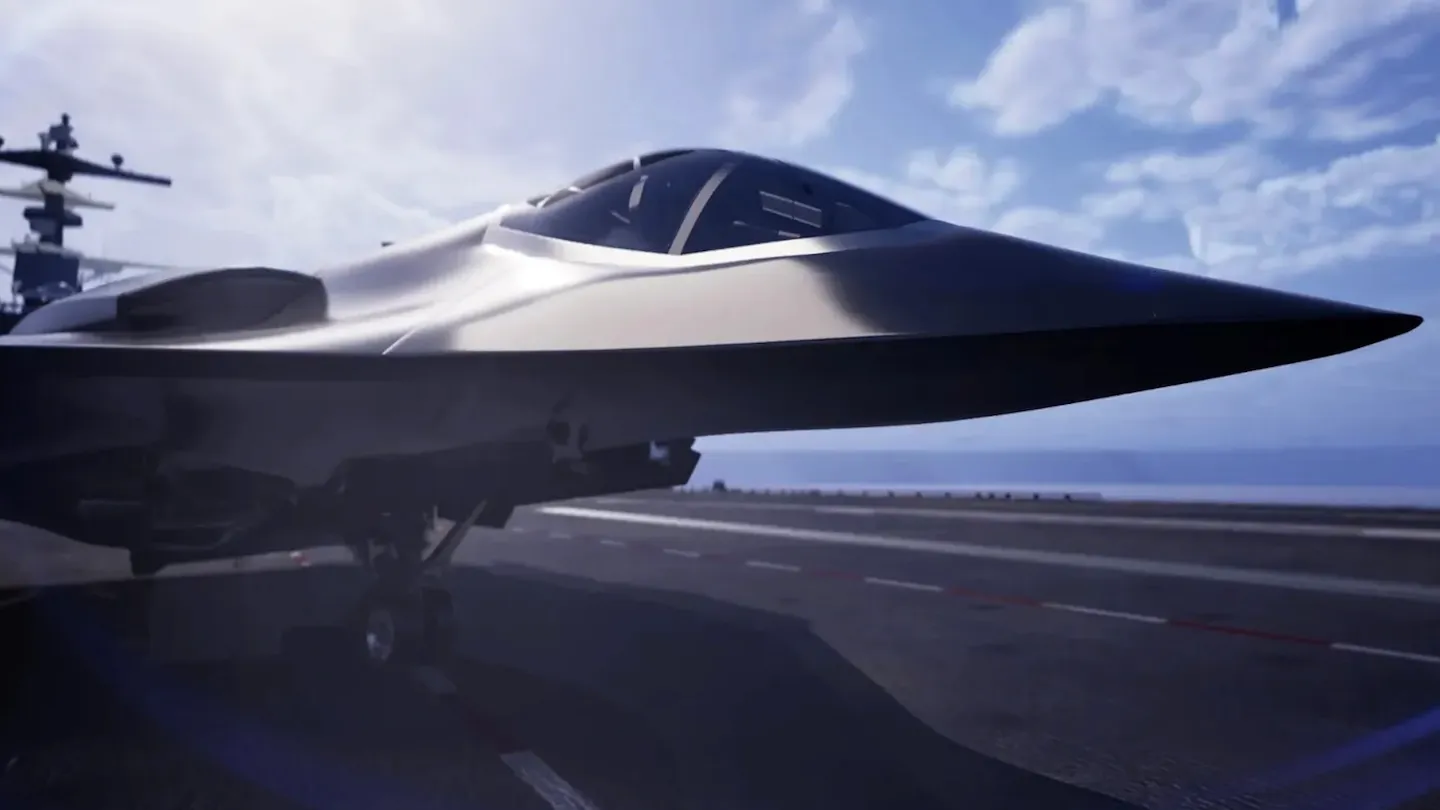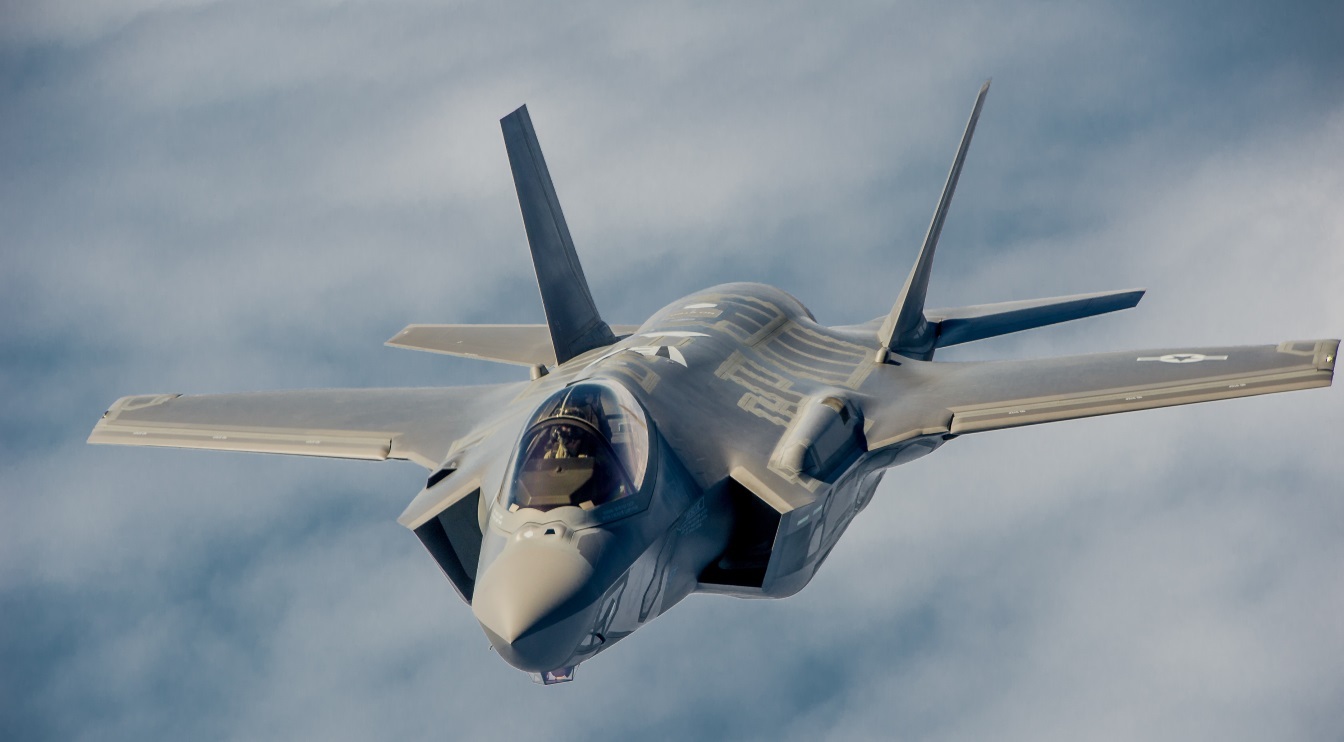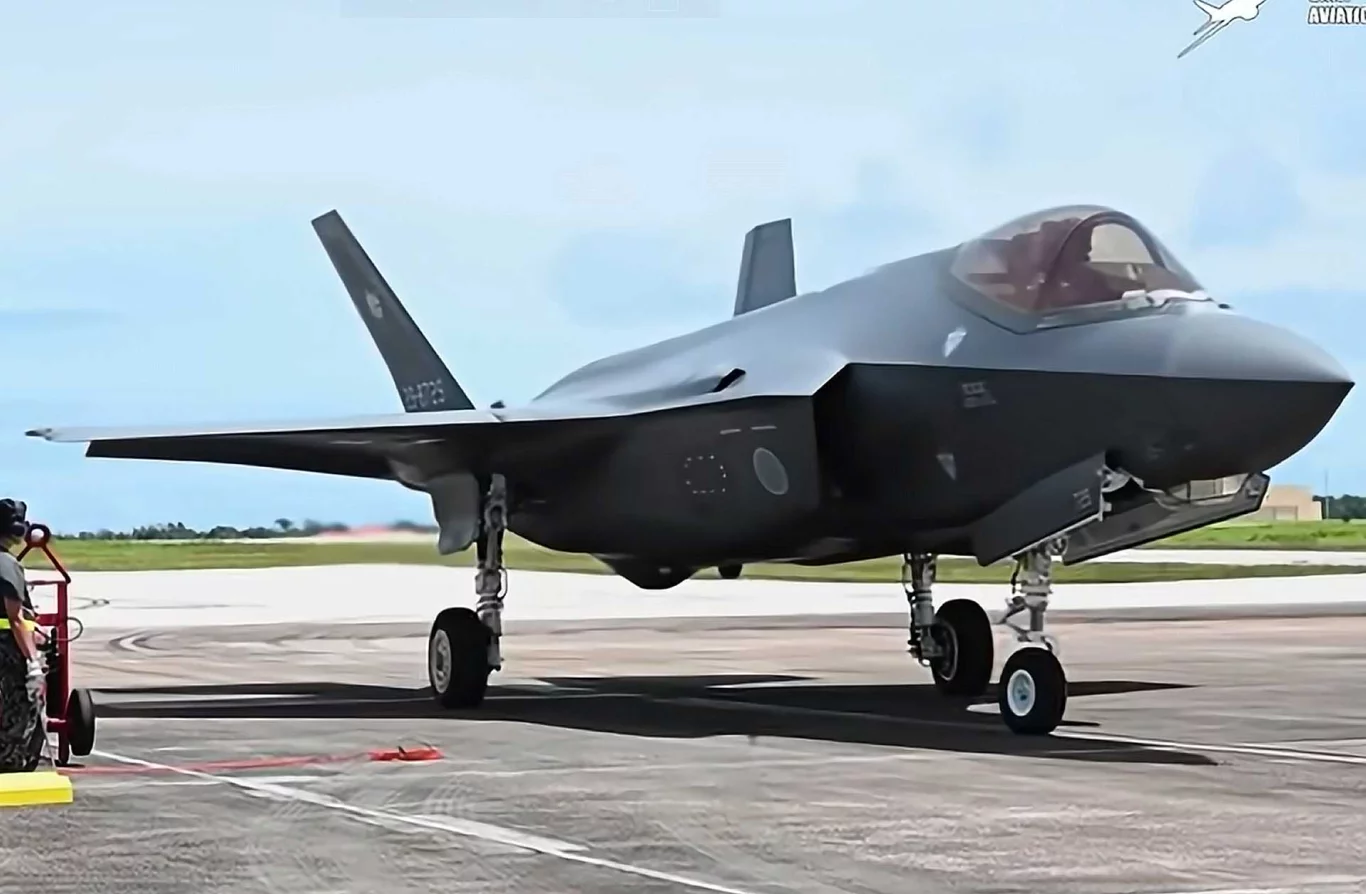In the high-stakes world of military aviation, where cutting-edge technology meets geopolitical tension, the U.S. Navy is on the cusp of a monumental decision that could redefine naval power for decades to come. Reports emerging from reliable sources indicate that the selection of a prime contractor for the Navy’s next-generation carrier-based stealth fighter, known as the F/A-XX, is imminent. This program, shrouded in secrecy and plagued by delays, represents the pinnacle of sixth-generation fighter technology, designed to dominate the skies over vast oceanic battlefields. As tensions escalate in regions like the Indo-Pacific, the urgency to field this advanced aircraft has never been greater. Drawing from recent insider accounts and official statements, this in-depth exploration delves into the program’s history, the fierce competition, budgetary battles, and the broader implications for global military balance.
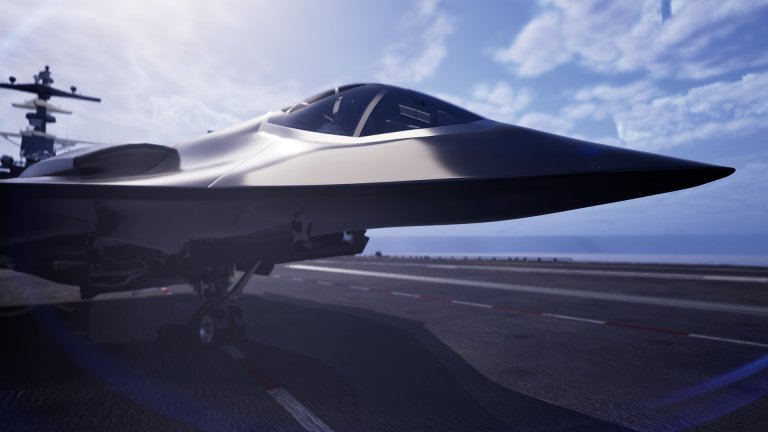
A conceptual rendering of Boeing’s proposed F/A-XX design, showcasing its sleek stealth features for carrier operations.
The Genesis of F/A-XX: From Concept to Critical Need
The F/A-XX program, part of the Navy’s broader Next Generation Air Dominance (NGAD) family of systems, traces its roots back to the early 2010s when military planners began envisioning a successor to the aging F/A-18E/F Super Hornet and EA-18G Growler fleets. These workhorse aircraft, introduced in the late 1990s, have served admirably in conflicts from Iraq to Afghanistan, providing strike capabilities, electronic warfare support, and air superiority. However, in an era of rapidly evolving threats—including advanced anti-access/area denial (A2/AD) systems deployed by adversaries like China and Russia—the Super Hornet’s limitations in stealth, range, and sensor integration have become increasingly apparent.
The F/A-XX is envisioned as a multi-role fighter that embodies sixth-generation attributes: ultra-low observability to radar, extended operational range for long-distance missions across the Pacific, advanced artificial intelligence for decision-making, and seamless integration with unmanned drones known as Collaborative Combat Aircraft (CCA). Unlike its predecessors, the F/A-XX will act as a “quarterback” in the sky, directing swarms of autonomous systems to penetrate enemy defenses while minimizing risks to human pilots. This manned-unmanned teaming (MUM-T) concept is revolutionary, allowing the aircraft to extend its reach and lethality without expanding the physical footprint on crowded aircraft carriers.
Development has been highly classified, even more so than the Air Force’s parallel NGAD program, which culminated in the selection of Boeing’s F-47 earlier this year. The Navy’s version must contend with unique challenges, such as catapult launches and arrested landings on moving carrier decks, corrosive saltwater environments, and the need for compact storage in hangar bays. These requirements demand innovative engineering, including reinforced landing gear, folding wings, and advanced materials to withstand the rigors of naval operations.
Breaking Developments: Selection on the Horizon
Recent reports suggest that the long-awaited downselect is finally approaching. According to sources familiar with the matter, U.S. Defense Secretary Pete Hegseth personally approved the go-ahead for contractor selection on October 4, 2025. This decision, made just days before President Donald Trump’s high-profile visit to the USS George H.W. Bush during the Navy’s 250th anniversary celebrations, has fueled speculation that an announcement could come as soon as this week. Insiders, including a U.S. official and industry experts, have indicated that the Pentagon is poised to choose between two aerospace titans, marking a pivotal moment in U.S. defense procurement.
The timing is no coincidence. Trump’s appearance aboard the Nimitz-class carrier on October 5, 2025, included witnessing live demonstrations of current air wing capabilities, such as F/A-18 Super Hornet launches and firepower displays. Accompanied by First Lady Melania Trump and top Navy brass like Chief of Naval Operations Adm. Daryl Caudle, the president engaged in discussions about future naval needs. Photos from the event show Trump observing operations from the flight deck, underscoring the administration’s focus on bolstering military readiness amid global challenges.
However, skepticism lingers. This isn’t the first time rumors of an imminent decision have surfaced. Back in March 2025, similar reports predicted a selection that never materialized, leading to months of uncertainty. Sources caution that last-minute hurdles—ranging from technical evaluations to fiscal constraints—could still derail progress, as they have in the past. Despite these caveats, the convergence of political support and programmatic momentum suggests that the F/A-XX is finally gaining traction.

President Trump aboard the USS George H.W. Bush, highlighting the Navy’s operational prowess during its 250th anniversary.
The Contenders: Boeing vs. Northrop Grumman
The competition has narrowed to Boeing and Northrop Grumman, two powerhouses with storied legacies in aviation. Boeing, the incumbent producer of the Super Hornet and Growler, brings extensive experience in naval fighter design. Following its acquisition of McDonnell Douglas, Boeing has maintained a stronghold in carrier-based aircraft, and its recent win with the Air Force’s F-47 positions it as a frontrunner for integrated sixth-generation systems. Conceptual renderings from Boeing depict a sleek, tailless design optimized for stealth and agility, capable of operating alongside drones for enhanced mission effectiveness.
Northrop Grumman, on the other hand, is making a bold comeback to naval fighter primeship. Known for the iconic F-14 Tomcat—last flown operationally in the 2000s—the company exited the Air Force NGAD race in 2023 to prioritize the F/A-XX and its B-21 Raider bomber program. This summer, Northrop unveiled its own concept art, featuring a diamond-shaped wing configuration for superior low-observability and carrier compatibility. A win for Northrop would diversify the U.S. defense industrial base, reducing reliance on a single contractor for next-gen fighters.
Lockheed Martin, the maker of the F-35C currently in Navy service, was reportedly eliminated from the fray in March 2025 after its proposal failed to meet key requirements. This leaves the field to Boeing and Northrop, with the winner set to lead a multibillion-dollar effort that could span decades and involve thousands of jobs across the U.S.
Budgetary Hurdles and Congressional Intervention
The path to this point has been fraught with financial and strategic obstacles. The Pentagon’s Fiscal Year 2026 budget initially allocated minimal funds for F/A-XX, prioritizing the Air Force’s F-47 amid concerns about industrial capacity overload. Officials worried that simultaneous development of two sixth-gen fighters could strain resources, especially with Northrop’s Sentinel ICBM program already facing delays and cost overruns.
In response, the Navy submitted a $1.4 billion request in its Unfunded Priorities List, emphasizing the program’s urgency. Congress stepped in, approving $750 million in supplemental funding and advancing a defense bill that restores full support for F/A-XX. Adm. Caudle, in his confirmation hearings, underscored the aircraft’s role in countering emerging threats, stating, “The Navy has a validated requirement for carrier-based sixth-generation aircraft, and it is critical that we field that capability as quickly as possible.”
These interventions highlight the tension between service-specific needs and overarching Pentagon strategies, but they also reflect bipartisan recognition of the program’s importance.
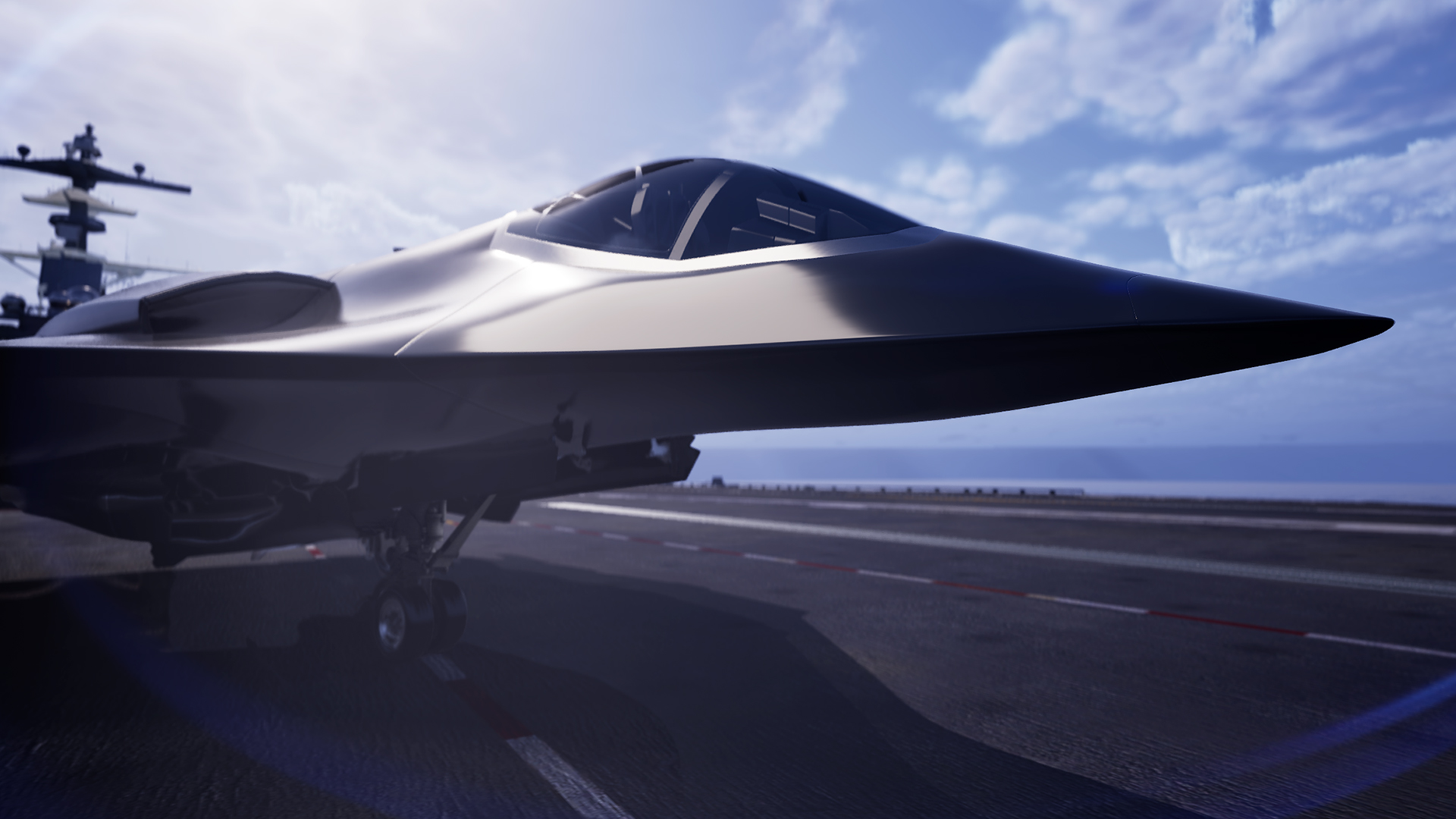
Northrop Grumman’s visionary concept for the F/A-XX, emphasizing advanced stealth and naval integration.
The China Factor: Racing Against a Rising Power
Adding fuel to the fire is China’s aggressive push in carrier aviation. The People’s Liberation Army Navy (PLAN) has made stunning leaps, with its Shenyang J-35 stealth fighter potentially entering limited production and conducting trials aboard the catapult-equipped carrier Fujian. Recent developments include the J-15T fighter and KJ-600 early warning aircraft, enabling China to project power farther from its shores.
China’s rapid iteration on sixth-generation concepts, including tailless stealth designs, poses a direct challenge to U.S. naval supremacy. As Beijing expands its carrier fleet and deploys advanced drones, the U.S. risks falling behind without the F/A-XX. Navy leaders argue that delaying the program could cede air superiority in potential conflicts, particularly in the Taiwan Strait or South China Sea.
China’s J-35 naval stealth fighter in flight, symbolizing the growing threat to U.S. carrier dominance.
Looking Ahead: Implications for Future Warfare
If selected this week, the F/A-XX contractor will embark on a journey to deliver initial operational capability in the 2030s, with full fleet integration by the 2040s. This timeline allows for a phased retirement of the Super Hornet, ensuring no gaps in capability. The aircraft’s advanced features—such as adaptive engines, directed energy weapons, and hypersonic missile compatibility—will transform carrier strike groups into more lethal, survivable forces.
Beyond technology, the program underscores broader shifts in U.S. defense strategy: a pivot to great-power competition, investment in innovation, and the integration of AI and autonomy. For the winning company, it means billions in revenue and technological leadership; for the loser, a potential reevaluation of priorities.
As we await the announcement, one thing is clear: the F/A-XX isn’t just an airplane—it’s a linchpin in America’s quest to maintain maritime dominance in an increasingly contested world. Stay tuned for updates as this story unfolds.

